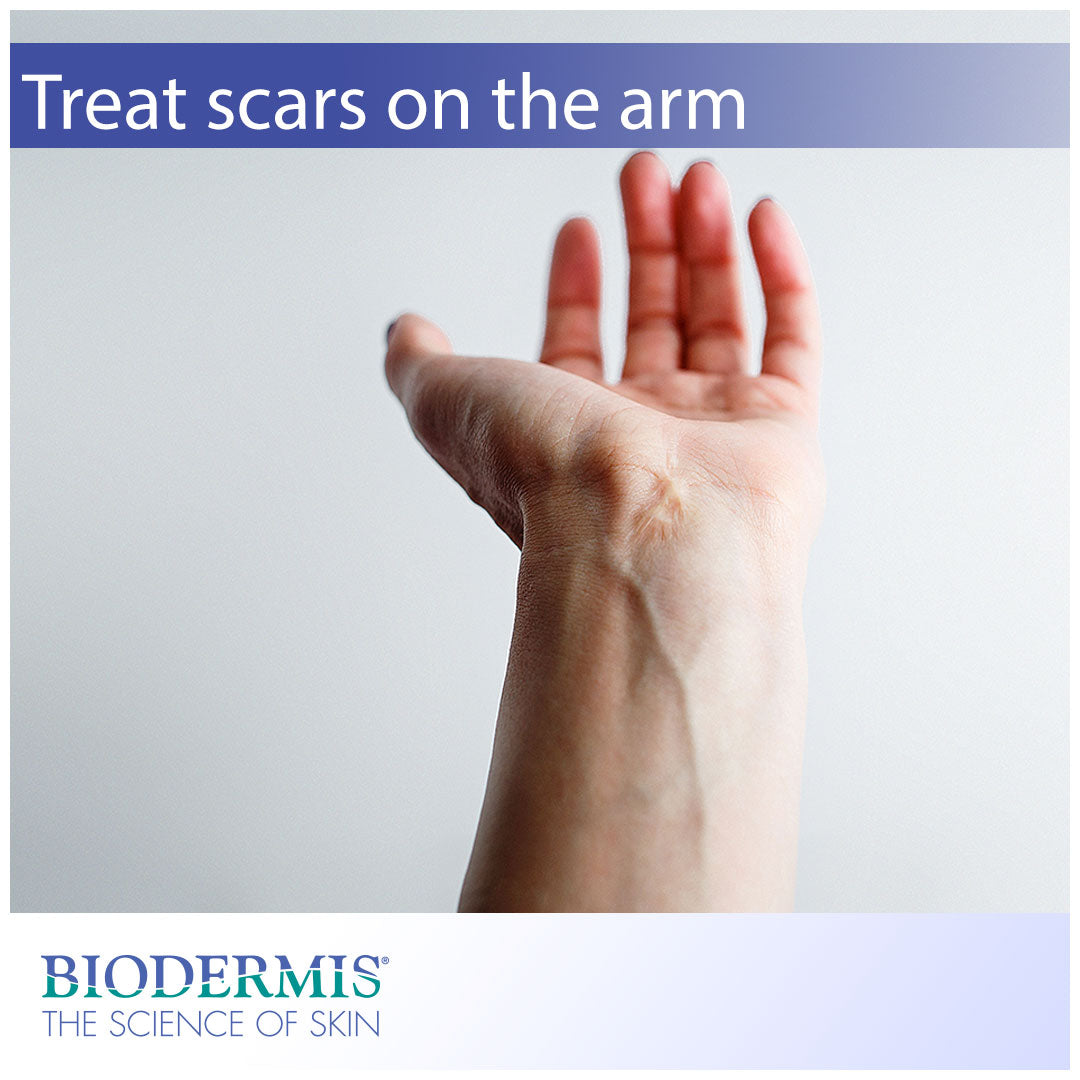Scars are the end result of a complex and dynamic wound healing process that follows four distinct stages. Those stages are hemostasis, inflammatory, proliferative, and maturation. All scars follow this same process no matter the source of the wound or where it is located on the body. While some scars will fade over time, others will develop into keloids and hypertrophic scars. These scar types are highly noticeable, especially on exposed areas of the body like the arms. People with scars on their arms want to know how they can treat them so they can feel comfortable again in their skin. Continue reading to learn more about your scars and to discover a clinically-proven way to treat them.
Why some scars are difficult to treat
Some scar types are more aggressive and noticeable than others for various reasons. A wound that heals poorly, for instance, will likely result in excessive scarring. There are a number of genetic and environmental factors that can interfere with wound healing. As you get older, the wound healing response slows down. This means that wounds will take longer to form into scars. The longer a wound takes to heal, the greater the risk of wound infection or re-injury, which results in greater scarring. This is why it’s important to keep your wound clean and covered with a bandage. Surgeons generally recommend to stop drinking and smoking before and after surgery. Excessive alcohol can diminish the body’s ability to fight infection and other harmful pathogens. On the other hand, smoking is a vasoconstrictor that inhibits nutritional blood flow to the skin. Both factors can impact wound healing and increase the risk of excessive scarring.
The most common scar types that patients seek treatment for include keloids and hypertrophic scars. Keloids are the most severe and are marked by an overgrowth of scar tissue that extends beyond the border of the wound. They are raised and lumpy in appearance. Keloids can appear purple, red, or brownish. These scar types are known to affect people with darker skin tones more frequently. Hypertrophic scars are also raised and discolored in appearance but the scar tissue does not extend past the border of the wound. Both scar types are caused by an over production of collagen during the maturation stage of wound healing. The older the scar is, the more difficult it will be to treat, so it’s recommended to begin treatment as soon as the wound has fully healed.
Clinically-proven scar treatment
When searching for scar care products, patients want only the best treatments that are safe and effective. Medical-grade topical silicone gel is a clinically-proven treatment that has been used for over 30 years for scar management. Silicone gel works by counteracting the excessive collagen buildup that’s associated with keloids and hypertrophic scars. This has the effect of flattening and reducing the discoloration of scars, allowing them to blend in with the surrounding skin tissue. Arm scars can be effectively treated with silicone gel because it easy to use and can’t be detected on the skin once applied. Silicone gel is hypoallergenic and effective for new and old scars.
Biodermis is an innovative market leader with 30 years of expertise in the medical silicone industry. Visit Biodermis.com today to explore a complete range of scar management and post-operative care solutions.
Biodermis offers custom-tailored referral programs designed to simplify and reduce the cost of your patients' post-op care. Additionally, we offer professional pricing if you opt to retail our products. Give us a call at 800.322.3729 and we will be happy to provide additional details on these programs.






